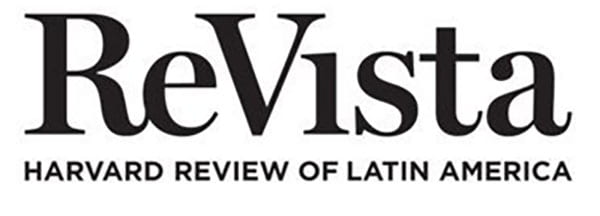“EL PERÚ DE CONTRASTES”
Photoessay by Erick Aquino
“Crisis Hídrica” (“Water Crisis”)

The image demonstrates the water crisis in this reservoir, which has seen its capacity decrease in recent months due to the lack of rainfall. This reservoir serves the agricultural area of the San Lorenzo Valley, as well as the towns of Tambo Grande, Malingas, and Partidor.
“Chapuzón en río Las Lomas” (“”Dip in the Las Lomas River”)

While the wealthier residents of the San Lorenzo Valley flock to recreational centers and pools, others flock to enjoy the river’s waters, regardless of whether or not they are suitable for their enjoyment.
“Basura en el Terminal El Chimbador” (“Garbage at the El Chimbador Terminal”)

The image contrasts with the daily flow of people entering and leaving the terminal to travel to different parts of the country; however, it seems that everyone is indifferent to the sanitary conditions of the food stalls surrounding the terminal, as well as the trash generated by passersby.
“Pa Prepararse Algo…” (“To Prepare Something…”)

Typically, fishermen come to these types of coves on Peru’s northern coast for seasonal fishing. They almost always leave a small shelter and some utensils, like this spoon and heater, so that when they return, they can eat and heat the water.
“Azucena”

On an ordinary day in a city where people move, bustle, and pass by… we see “Azucena,” one of the city’s first female photographers. Today, we see her wandering the streets, pulling a cart, and selling candy. No one knows what happened to her, but she’s now part of the city’s everyday life.
“Sobreviviendo” (“Surviving”)

The image highlights the problems and crisis surrounding declared heritage sites and the conflicts over their state of conservation. In Trujillo, the capital of La Marinera and Primavera, it’s common to see this type of contrast between modern structures and those that are crumbling due to lack of maintenance and upkeep.
“Crisis Hídrica”

Represa de San Lorenzo. Las Lomas. Piura. 04 de enero del 2025. La imagen evidencia la crisis hídrica de este reservorio que disminuyó en los últimos meses su capacidad debido a la falta de lluvias. Este embalse atiende la zona agrícola del Valle de San Lorenzo, así como a las poblaciones de Tambo grande, Malingas, y Partidor.
“Chapuzón en río Las Lomas

Centro poblado de Las Lomas. Piura. 04 de enero del 2025. Mientras los pobladores de mayores recursos económicos del valle de San Lorenzo acuden a centros y piscinas de esparcimiento, los otros acuden a disfrutar de las aguas del río, sin considerar si las aguas son aptas o no para el disfrute.
“Basura en el Terminal El Chimbador”

Terminal Terrestre El Chimbador. Chimbote. 01 de febrero del 2025. La imagen contrasta lo cotidiano del movimiento de personas que ingresan y salen del terminal para viajar a distintos puntos del país; sin embargo, pareciera que todos son indiferentes a las condiciones de salubridad de los puestos de comida que rodean el terminal, así como la basura que generan los transeúntes.
“Pa Prepararse Algo…”

Playa La Poza. Circuito de Playas El Dorado. Nuevo Chimbote. 31 de enero del 2025. Por lo general, en este tipo de caletas de la costa norte del Perú, los pescadores llegan por temporadas a realizar sus actividades de pesca. Casi siempre dejan instalada una pequeña ramada, y algunos utensilios, como esta cuchara y calentador, para que cuando regresen, puedan comer y calentar el agua.
“Azucena”

Centro Histórico de la Ciudad de Trujillo. Calle de la Catedral. 29 de enero del 2025. Mientras en un día cualquiera en la ciudad donde las personas transitan, se mueven, y pasan… vemos a “Azucena”, una de las primeras fotógrafas de la ciudad. Hoy, la vemos deambulando por las calles, arrastrando un carrito, y vendiendo golosinas. Nadie sabe que le pasó, pero ya es parte de lo cotidiano de la ciudad.
“Sobreviviendo”

Centro Histórico de Trujillo. Calle San Martín. 9 de febrero del 2025. La imagen evidencia la problemática y crisis entre los bienes declarados patrimonio, y los conflictos por su estado de conservación. En Trujillo, Capital de la Marinera y Primavera, es común ver este tipo de contrastes entre estructuras modernas, y estas que se están cayendo por falta de mantenimiento y conservación.
Related Articles
Editor’s Letter: Inequality
In celebration of the 30th anniversary of the David Rockefeller Center for Latin American Studies at Harvard (DRCLAS), ReVista is focusing on inequality.
The History of Inequality
For the last few decades, a strong consensus has held that Latin America is not only the most economically unequal region in the world, but also one where inequality has become structurally entrenched. Even in countries where income levels are relatively high by global standards, a small elite continues to control a disproportionate share of national wealth. This consensus reflects a broader shift in the development community and public arenas.
Waxing and Waning: Institutional Rhythms of Inequality
Zelia Maria Magdalena Nuttall was famous in her time, well-known as an archaeologist, an Americanist, an antiquarian, an ethnologist, a folklorist and “a lady scientist”; she was a woman “making it” in a man’s world from the 1880s to the 1930s. Deeply engaged in research about ancient civilizations in Mexico, she led a remarkable life as a pioneer in the evolution of anthropology as a field of study.



